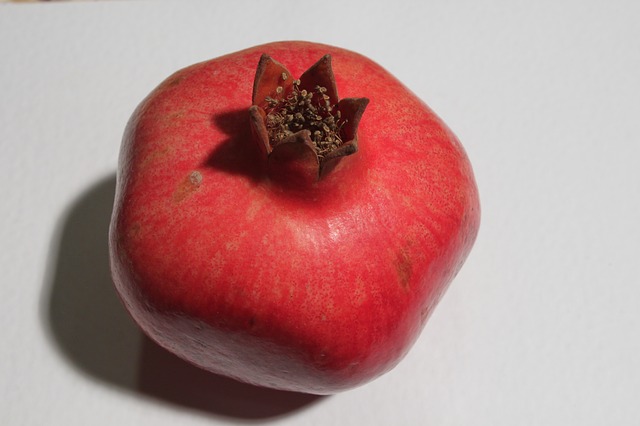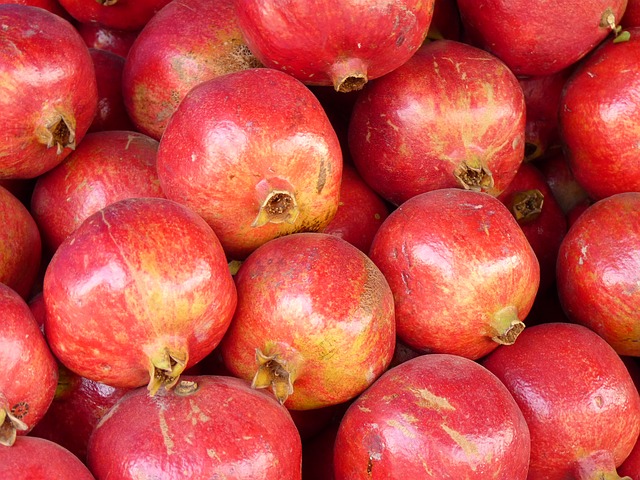Pomegranate is one of the healthiest fruits. They are rich in vitamin C, potassium, antioxidants, and fiber. But, the downside is that they are fairly expensive. It requires a lot of time and effort to take out the seeds of the pomegranate. Pomegranates do not ripen after harvesting. So it is very important to know if a pomegranate is ripe or not to reap the full benefits and get best value for your money.
The shape and weight of the pomegranate are the best indicators of its ripeness.
Look at the shape of the Pomegranate
A fully ripened pomegranate is little squarish to hexagonal in shape and its sides are relatively flat. Stem and flower end (calyx) of the fruit is also filled out and somewhat flattened. An unripe pomegranate is perfectly spherical.
The change in shape on ripening is due to the pressure of arils from inside on the peel of the fruit. Pomegranate may also split open on ripening or exposure to rain or increased humidity.

Choose the Heaviest among the Similar-sized Ones
Hold the pomegranate in hand and feel the heaviness. Compare the weight of a few pomegranates that are almost of the same size. Go for the one which appears heaviest among them. Fruit that is heavier for its size is juicier.
Look at the Condition of Peel/Skin
Pick pomegranate with a firm and taut skin.
The peel of a ripe pomegranate is slightly rough, matte, and soft (easy to scratch) when compared to smooth, glossy, and hard (difficult to scratch) of unripe ones.
Small scratches on the peel do not mean that the fruit is bad inside in the absence of other signs of damage.
Observe the Color
There are many varieties of pomegranate and color varies from crimson red to dark red, reddish-brown, purple, pale pink, or mottled creamy yellow.
So color alone does not tell much about the ripeness of the fruit. But there should be no traces of green on the peel of a ripe pomegranate.
Check the Pomegranate for any Soft Spots or Other Signs of Damage
Hold the fruit in your palm, lightly squeeze it all around, and feel for any soft-mushy areas.
Do not go for the pomegranates having soft spots, cuts, bruises, thin and dry peel.
How to Store Pomegranate?
- Pomegranate can be stored at room temperature away from direct sunlight for 1-2 weeks.
- Fruit loses nearly 20 to 25 percent weight on storing for 4 weeks at room temperature. So refrigerate pomegranate if you need to store them for long. Loosely wrap whole or uncut pomegranate in a plastic bag and put it in the refrigerator. It will stay fresh for about 3 months.
- You can also refrigerate seeds of the pomegranate. Remove any soft, bruised or brown seeds and white bits of membrane before storing. Wash and dry the seeds. Now refrigerate them either in an airtight container (preferably of ceramic or glass) or zip lock bag. Use them within the next 5- 7 days.
Tip # Do not leave seeds uncovered in the refrigerator.
The final thought is that buy good and ripe pomegranates to enjoy the greatest flavors. Ripe pomegranate is heavy and hexagonal with flattened sides. Proper storage is equally important as picking the right ones.

